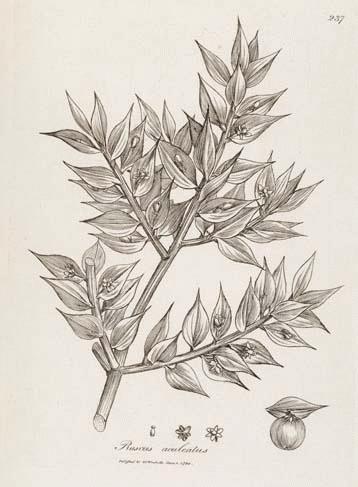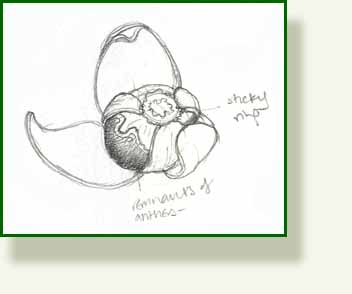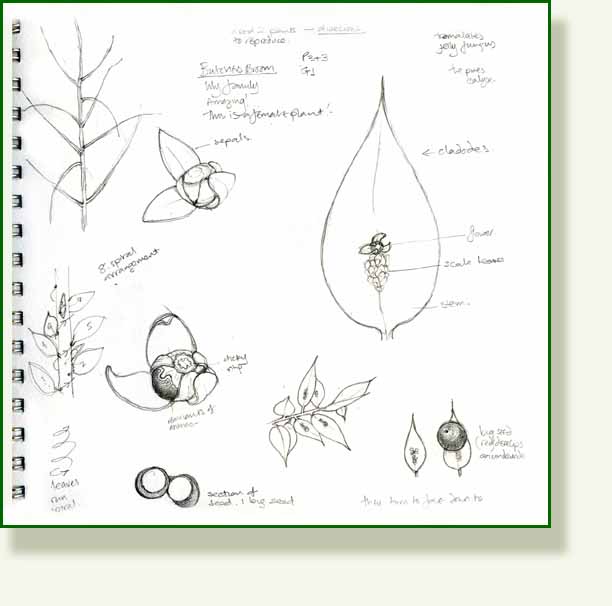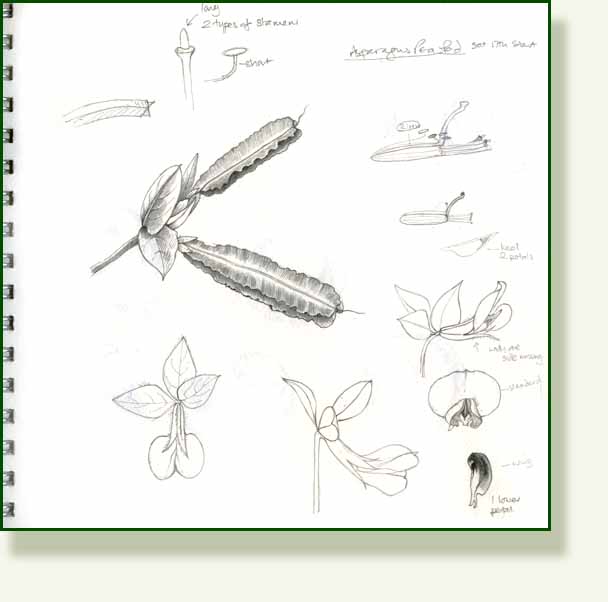..when its a bract, or when its a cladode….
Bract : A leaf that seems part of the flower cluster of a plant, or in the case of plants with insignificant flowers, may substitute for it in appearance by its bright colouring. Bougainvilleas are an example of wonderfully colorful bracts.
Cladode: A cladode is a stem modified for photosynthesis that looks like a leaf. It is flat for increasing the surface area, thick for storing water and green for photosynthesis.
Today I was gingerly examining the Butchers Broom spray that Liz had brought in. This fiercesome plant has spiny leafy things that encircle the stem repelling all comers from all angles. These are not of course leaves but cladodes, the flowers such as they are, grow from the centre of this modified stem protected by little scaly bracts. The ripened seed then makes a bright red berry which sits under the cladode..sometimes all winter no doubt waiting in hope for some foolhardy creature to brave the thorns and eat it.
In order to see the flower properly I had to use the powerful microscope capable of 400 times magnification. Here is revealed a whole new world of tiny, sticky, hairy, cells and structures and I was able to make a drawing, more or less accurately for a microscope novice, of the flower parts of this strange plant. This is the female plant and will need a nearby male plant to make viable seeds. The correct term for these plants is dioecious.. this time from the Latin meaning “of two households”
This drawing above is enlarged from the sketch book page below and shows the female ‘flower’, surrounded by sepals ( that look like petals ) and the remnants of anthers, (the dark sheath around the seed.) Then to add to the misleading nature of its appearance it is, unbelievably, part of the Lily family, its Latin name Ruscus aculeatus .
I have one additional and rather uncomfortable fact to share with you about butchers broom. The boughs, spines and all were allegedly employed for flogging chilblains…Hmmmm. This information and image above from from Botanical.com, a modern herbal
The other drawing of the seed pod (unripe) and flowers of the asparagus pea plant was also done with the help of the powerful microscope. With it you can see quite clearly the two completely different types of stamens cleverly designed to deposit pollen from different angles onto the body of the visiting insect.
Phew! enough science, however fascinating.. I can see you are nodding off now ..
_______________________________________









